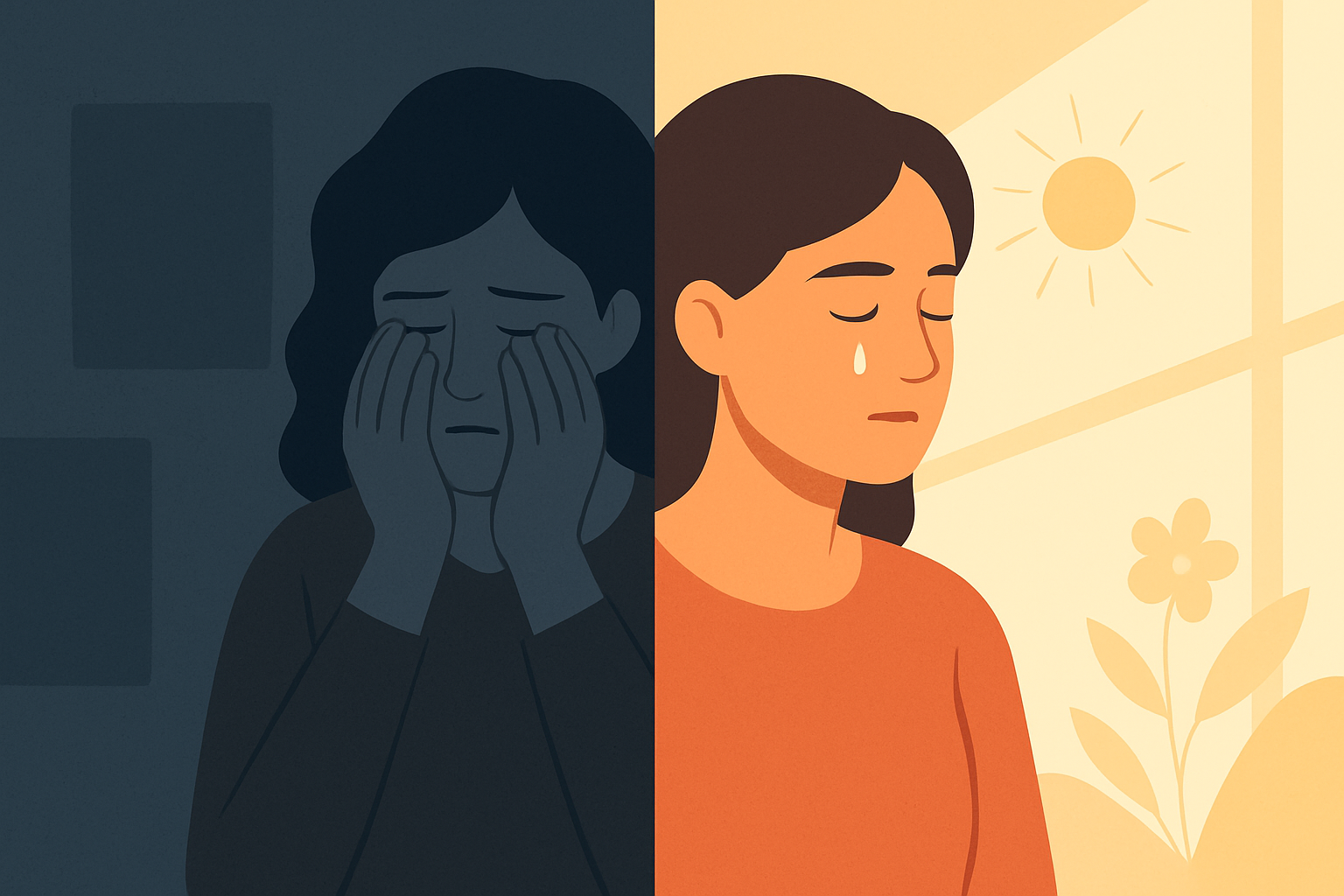Crying is one of the body’s most natural ways to release built-up emotions. Whether it’s sadness, stress, or even relief, tears can feel like a reset button for the mind. But what happens when you want to cry, yet no tears come? If you’ve found yourself asking, “why can’t I cry anymore?”, you’re not alone. Many people experience this emotional block at some point in their lives.
In this guide, we’ll explore the psychological and physical reasons behind tearlessness, how it relates to feelings of sadness or loneliness, and what you can do if you feel stuck emotionally.
Why Can’t I Cry Anymore? The Common Reasons
- Emotional Numbness
Sometimes, when emotions become overwhelming, the brain shuts down as a defense mechanism. This emotional numbness can make you feel detached, leaving you unable to cry even when you want to. - Depression and Anxiety
While depression often brings frequent crying, it can also cause the opposite effect. Many people describe depression as feeling sad for no reason yet unable to release that sadness through tears. Anxiety, too, can suppress emotional expression by keeping your body in constant fight-or-flight mode. - Medication Side Effects
Certain antidepressants or mood stabilizers can reduce emotional sensitivity. If you’ve noticed changes in your ability to cry after starting medication, it may be a side effect worth discussing with a doctor. - Cultural or Social Conditioning
From a young age, some people are taught to hide tears—especially men who grow up with the idea that “crying makes you weak.” Over time, this conditioning can turn into an automatic emotional block. - Physical Conditions
Tear gland issues, dehydration, or medical conditions like Sjögren’s syndrome can make it harder for the body to produce tears physically, even when emotions are present.
“I Want to Cry But I Can’t” — Why This Feels So Frustrating
The act of crying is more than just emotional—it’s physiological relief. When you say, “I want to cry but I can’t,” it’s often because your mind recognizes a need for release, but your body refuses to cooperate. This mismatch can create additional stress, frustration, or even guilt.
Instead of forcing tears, it’s important to address the root cause of the block.
Why Can’t I Cry When I Want To? Signs of Emotional Suppression
If you’re struggling with tearlessness, you may notice:
- Feeling emotionally flat or disconnected
- Trouble expressing sadness or empathy
- A sense of heaviness or mental fog
- Wanting to cry during sad moments (movies, music, or personal experiences) but being unable to
This doesn’t mean you’re broken—it means your emotional system is under strain and needs gentle care.
What to Do If I Feel Lonely and Sad But Can’t Cry
When you feel isolated, crying often acts as a self-soothing tool. But if the tears won’t come, here are some helpful alternatives:
- Journaling: Writing out emotions can act as a substitute release when tears won’t flow.
- Talking to Someone: Sharing feelings with a trusted friend or therapist helps lighten the burden.
- Engaging in Art or Music: Creative expression often taps into emotions that words can’t reach.
- Practicing Mindfulness: Meditation or grounding exercises help you reconnect with your body.
- Therapy: A professional can guide you through suppressed emotions and provide coping strategies.
Healthy Ways to Release Suppressed Emotions
Even if tears don’t come, emotions can still be processed. Try these approaches:
- Exercise to release physical tension
- Listen to music that resonates with your mood
- Watch an emotional movie or read a touching book
- Practice deep breathing to regulate stress hormones
- Allow yourself to feel sad for no reason without judgment
When to Seek Help
If your inability to cry is paired with symptoms like long-term sadness, lack of interest in activities, or feelings of emptiness, it may be a sign of depression or another mental health concern. In such cases, reaching out to a mental health professional is an important step.
Final Thoughts
If you’ve been wondering, “why can’t I cry anymore?”—know that you’re not alone, and it doesn’t mean you’re emotionally broken. Whether it’s due to depression, stress, medication, or simply emotional exhaustion, there are ways to reconnect with your feelings. Remember, crying is just one form of emotional release—healing can take many forms, and seeking support is always a sign of strength.












